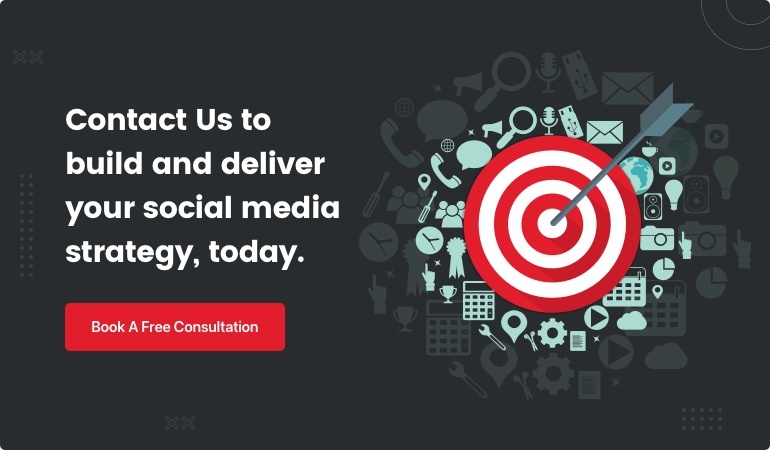Lead generation and conversion are some of the most important goals of nearly every business out there. The reason is simple: if you can generate qualified leads, and effectively convert them into customers, you will increase your sales and ROI, and gradually grow your business.
Perhaps you already know how to capture leads, but do you actually know how to achieve long-term success? You need to start by implementing lead-generation techniques into your strategy, but you also need to put the right person in charge.
Before diving into the essential techniques to use, check out who should be responsible for your revenue streams, and how to find the right candidate.
Who’s Leading This Show?
The person responsible for your revenue streams is a Chief Revenue Officer (CRO). Since a CRO is responsible for overseeing and driving revenue growth, you need to find a reliable and skilled candidate for the job.
Here’s what you need to know to make the right decision when hiring a CRO, or giving the position to one of your existing employees.
Chief Revenue Officer (CRO)
To pick the best CRO, you need to fully understand the responsibilities that they will be accountable for on the job. You also need to have a clear idea of the skillset that the job requires so that your chosen CRO can truly help your business.
1. Responsibilities
Since CROs is responsible for increasing revenue growth, they need to know how to handle sales, marketing, and customer experience. Moreover, they need to align themselves with one another and collaborate seamlessly with a CMO (Chief Marketing Officer) and a CXO (Chief Experience Officer).
A Chief Revenue Officer should take the following responsibilities:
- Creating a client outreach strategy.
- Coordinating the process of implementation of the client outreach strategy into marketing, sales, and client management.
- Collaborating with the board of directors and the executive team to develop strategies for growth.
- Developing processes for sales management: account planning, revenue pipeline, and proposals.
- Monitoring leads and the pipeline and implementing proper changes to drive revenue growth.
- Developing short-term and long-term strategies for growth.
- Monitoring the strategies and the revenue cycle.
- Training account management and sales teams.
- Leading strategically by taking advantage of customer research.
2. Skillset
The CRO you choose needs to pack a proper skill set to help you increase leads and conversions, and boost your revenue.
Since the primary goal of a Chief Revenue Officer is driving revenue growth, make sure your chosen CRO is:
- Passionate about completing your brand’s mission.
- Motivated to achieve your company’s goals.
- Able to make changes, including both executing and implementing them.
- A leader who knows how to motivate, plan, organize and oversee all the other workers they are responsible for.
- A critical thinker who can analyze the given data and strategize for the best outcomes.
- Goal-oriented and knows how to achieve all your revenue goals.
- An excellent communicator who knows how to establish credibility, form strong relationships, reach objectives, consult with teams, speak publicly, and write technical content.
- A professional who puts ethics, morality, credibility, and integrity first.
- An expert in their field is capable of helping you achieve all your goals.
At their core, CROs are basically VPs of sales and marketing. However, the role of a CRO is actually much more than that.
It’s strategic because a CRO conducts strategic planning of short-term and long-term goals for an organization to achieve its revenue goals and drive sustainable growth. It’s also strategic because a CRO is responsible for risk management processes, as well as for leading sales and marketing teams, and overseeing customer success.
The role is also tactical, because a CRO drives sales acceleration and sales enablement, implementing processes that help sales teams improve the effectiveness of their day-to-day operations.
A CRO does that by teaching operational excellence, that is, by standardizing certain methods that increase sales success. Here’s what those methods are.
Help Your Sales Team Become Subject Matter Experts Through Quality Content
Rarely any buyer (be it B2B or B2C) puts their trust in salespeople nowadays. When looking to buy a product or a service, few people will trust what a salesperson says because everyone knows that their primary goal is to generate more sales and revenue. Can or should you expect an honest answer or an independent piece of information from a sales rep? Certainly not. And have you ever met a sales rep who recommended their competitor because their solution is a better fit for your needs?
Buyers would much rather conduct their own research when considering a brand and receive recommendations from their peers or consult with their friends or family. Most of us would rather discuss our purchasing decisions with experts on the subject matter we’re interested in or with someone we trust to give them an independent opinion that’s not tainted by personal interest.
Subject matter experts (SMEs) are real experts in specific areas. They pack extensive knowledge and expertise that help establish credibility and trust.
To generate more leads and revenue, your sales team members need to become subject matter experts. Only then will they be able to improve their efforts and enrich your sales process.
Provide your sales team with quality content they will use to learn about specific areas. Train them regularly, and make sure they know exactly how to reassure clients that your brand is the right choice for them.
Have Appropriate Content Formats for Your Target Audience
Content is what will help you attract and convert leads, eventually increasing your sales and revenue. But do you know what content format will provide you with the best results?
There is no one right answer to this question. The thing is, no one will find only one content format that will suit them. Therefore, you should mix it up with different formats, so that you can appeal to a larger target audience.
Depending on your target audience, you can choose among the following content formats that deliver the best results:
- Blog posts
- Images
- Infographics
- Videos
- Podcasts
- Presentations
- Whitepapers
- Case studies
- Webinars
- Quizzes
- eBooks
Adding Value to Conversations
If you don’t provide your clients with real value, you won’t compel them to engage in your brand, and it’s hard to keep them coming back for more.
But how can you add value to your conversations? You do this by showing them the value they will experience if they put their trust in you.
Will you save them money? Will you make them money? Will you reduce their risks? Will you solve any burning pain points that your clients may have? Anything that is fact-based and explains how you make their business or their life better, less painful, or more effective is relevant.
Ask about their needs, and propose a solution only you can give them. Provide them with value, and you’ll hit the bulls-eye.
Seeking Out Social Media Groups & Communities
Engaging in social media groups and communities can help you reach out to numerous leads interested in what you have to offer. To find the right groups, you should monitor social media, and really listen to what your audience is saying about you.
Social listening is the key to social selling, as it lets you in on consumer behavior, and helps you discover new sales opportunities.
Once you know in which social groups and communities your target customers are, jump into the conversations at the right time. Be proactive, offer your products or services, and showcase their value. Build trust and meaningful relationships, and you’ll effectively engage people in your brand.
Establishing a Community Around Your Brand
Establishing a brand community isn’t about promoting your business. It’s about delivering value that gives a reason for your audience to join your community.
You can offer discounts now and then, but you should mostly offer useful tips and advice that help your audience solve their pain points. Don’t focus on sales pitches. Instead, start conversations.
Create a community that will empower your target customers, and encourage them to ask questions, share ideas, and really connect with one another. That way, you’ll connect to them as well, and engage them in your brand.
Targeting Shot Callers in B2B Situations
The best decision-makers (aka shot callers) you can target in B2B situations are:
- C-level managers
C-level managers often make big decisions without consulting with someone else from their organization, so it’s always smart to reach out to them. If they discuss your brand with someone from their company, your chances of making sales would only get bigger.
- Mobilizers
It’s not very easy to break through to mobilizers, as they tend to be quite skeptical, and don’t like sales pitches and various sales tactics. What they’re looking for is boosting productivity, so you need to let them know how your product or service can do it.
With mobilizers, forget about the bells and whistles. Be transparent and honest, and show them how you can help improve their bottom line.
- Business users
Business users are the actual users of your products or services. They don’t make huge business decisions, but their opinion is definitely important.
As they are those who would use your services or products, they’ll actually recommend them to C-level managers and other higher-ups. You should thoroughly explain how your offer would help their business so that they discuss it with the decision-makers.
Cross-Selling and Up-Selling Through Thought Leadership
Cross-selling and up-selling are two very useful sales techniques for converting qualified leads and increasing sales. Perhaps you already use them, but have you ever considered leveraging thought leadership to do it?
Establishing yourself as a thought leader means building credibility, authenticity, and trust. It means showcasing that you’re an authority in your field who can solve all your target customers’ challenges. It means having in-depth expertise and proposing innovative ideas to inspire and motivate people.
Therefore, when you’re a thought leader, you can inspire people to purchase complementary products or services from you (cross-selling) or encourage them to spend more (up-selling). You’ll know how to do it effectively, without ever being pushy.
Don’t Limit Yourself to the Online Environment
There are many more leads online than offline. They’re much easier to capture, and they’re more affordable to acquire. The challenge is that it’s actually harder to convert online leads, primarily because there are quite a lot of them. As there are fewer offline leads, it’s more expensive to capture them, but it’s actually easier to convert them.
Don’t focus only on the online environment. Explore business opportunities in the offline world as well, as there are absolutely enough leads to help you meet your sales goals.
Remember that continuity is key for long-term success – in sales and any other activity. You won’t see results overnight and there’s no silver bullet to make your YouTube video go viral either. But these lead generation and conversion techniques will help you get there quicker, and significantly drive your revenue growth.








